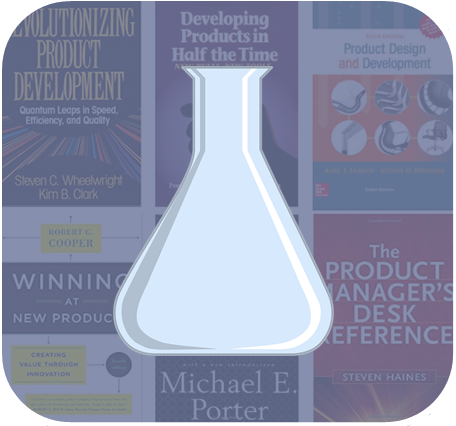Best Books: Inspired, Marty Cagen; Developing Products in Half the Time (Chapter 5) – Reinertsen and Smith.
Best Articles: Defining Next-Generation Products
Product Spec –
Function – A description of what the product must do, or how the product must perform, within a specific dimension (e.g., towing capacity of a truck); also describes a group of people within a company that all fall within a similar discipline (e.g., the marketing function, the engineering function).
Who Writes the Product Spec –
Must have; would like to have – Simple yet effective way of communicating whether a spec/feature/benefit is required or preferred.
Product Innovation Charter – A document that captures the “who what why when and how” of the product; clarifies the goals, objectives, guidelines, assumptions and scope of the project or product; can be a “living” document, and may or may not be the same document as the product spec.
Synthesize – The process of combining a number of different ideas into a larger more complex insight; critical for defining products because of the large number of relevant considerations; “considering everything I know about price, competitors, strategy, etc…this is the product spec.”
What not How – Good product specs should detail WHAT the product should do (which requires a focus on benefits), not HOW to do it; it is the job of the product design/engineering group, not the marketing team, to answer the HOW.
Differentiation – What makes your product different than competitors or alternatives.
Elevator Pitch – A very short summary detailing your product offering and its value proposition.
Unlike Our Competitors – A useful way to begin a sentence describing the product, since it forces you to clarify the brand’s or product’s differentiating properties.
What It Will Not Do – Itemizing what a product will not do provides more clarity than just listing what it should do; a way to add clarity to product specs.
Implicit Requirement – Not so much something spec’d, but rather something the consumer expects in a product without having to articulate or explicitly ask for it; a product characteristic that goes without saying.
Benefits, Not Features – A focus on specing for outcomes and benefits, not features.
Metrics –
Product Goals – Objectives, be it objective performance (fuel economy) or subjective (taste better); good product specs provide clear product goals.
Flow Down the Specs –
Product Mission – A lot like the Product Innovation Charter; basically a document capturing the desired outcomes and goals of the product; illustrates what success looks like.
Cost Model / Technical Model –
Business Case – The justification for undertaking a project or product, typically made using financial analysis (expected cost, benefit, profit, etc.).
Fuzzy Front End – The phase of a project when it’s just beginning but has yet to be clearly defined; a time in which progress is often difficult and time is often wasted.
